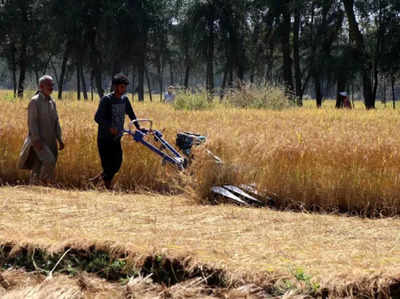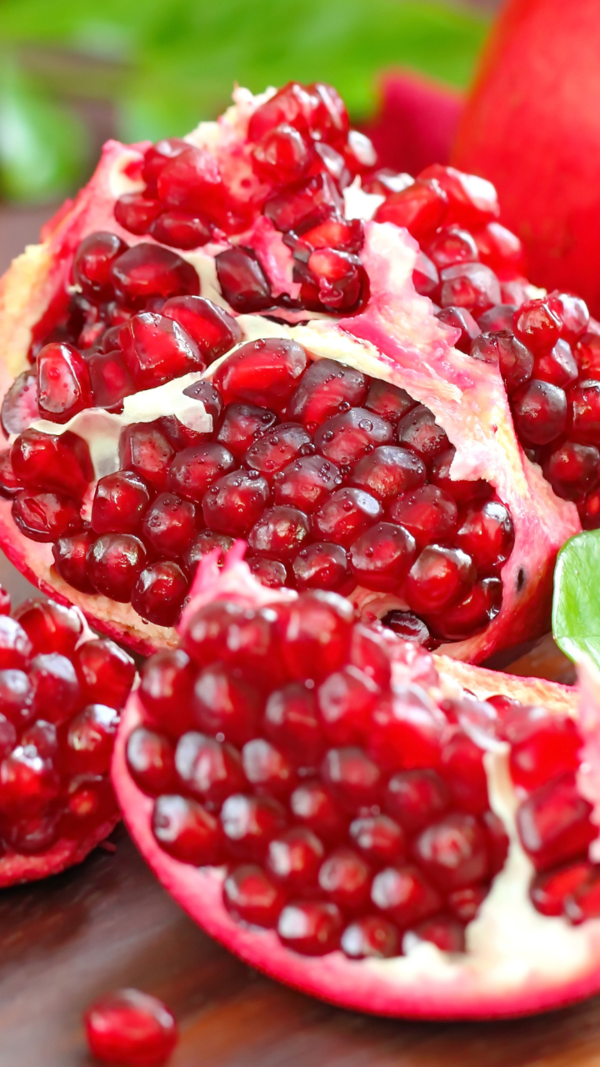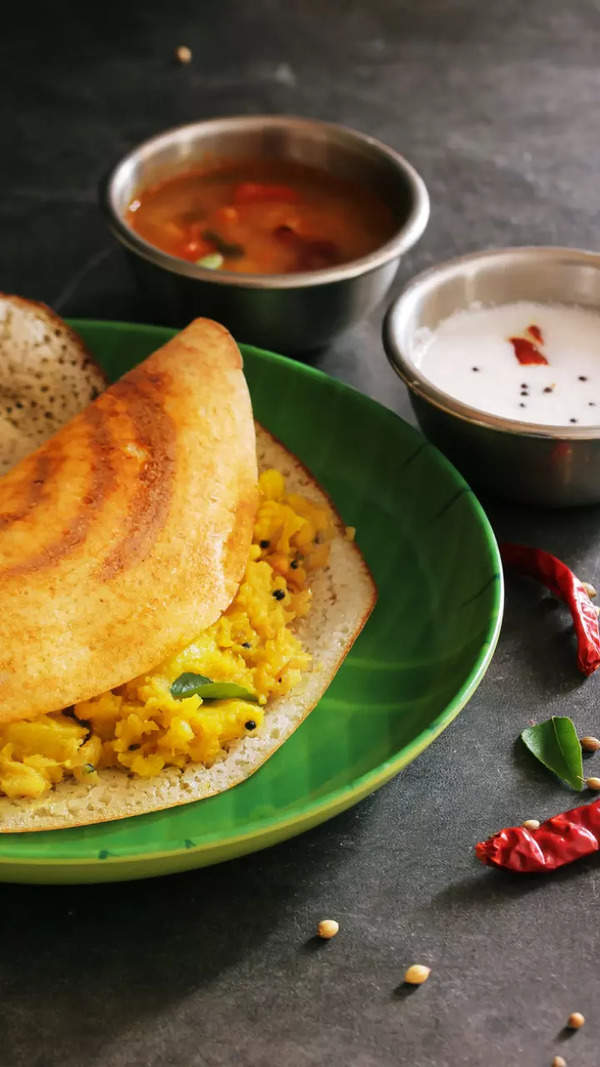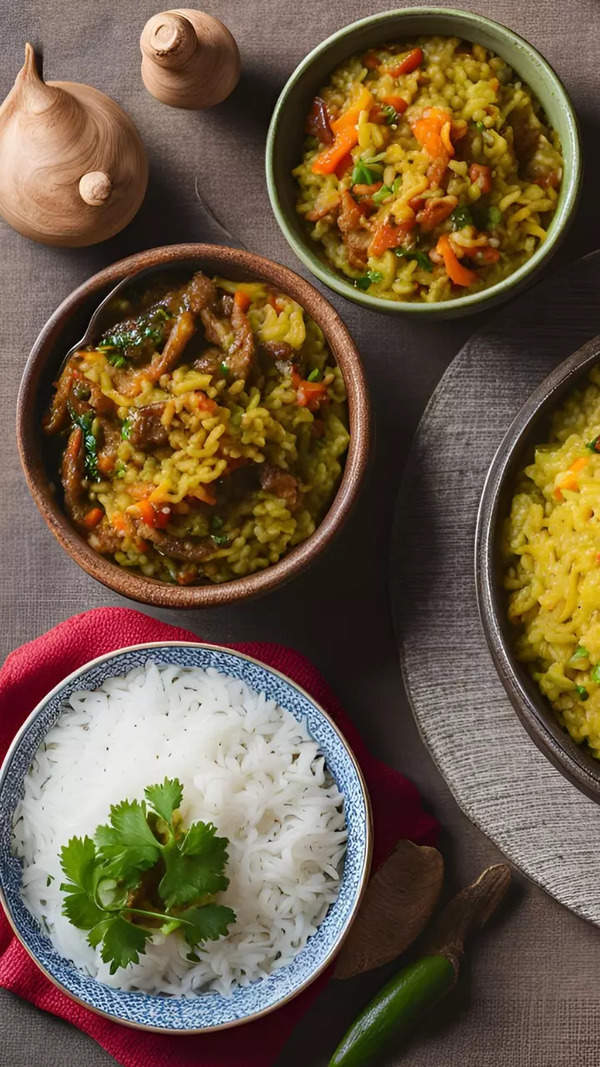- News
- India News
- Govt estimates record kharif output
Trending
This story is from September 22, 2021
Govt estimates record kharif output
The agriculture ministry on Tuesday estimated record output of kharif foodgrain, including paddy, and pegged its target for the entire 2021-22 crop year closer to the all-time high production figures of 2020-21. Overall, for both kharif and rabi put together, it set the target of 307 MT of foodgrain for the current crop year which is merely a million tonne less than the record output in the previous year.

Paddy harvesting, on the outskirts of Srinagar
NEW DELHI: Against the backdrop of improved monsoon rainfall and increased acreage of summer sown crops, the agriculture ministry on Tuesday estimated record output of kharif foodgrain, including paddy, and pegged its target for the entire 2021-22 crop year closer to the all-time high production figures of 2020-21.
Though the estimates will be fine-tuned later, the first one for the current crop year on kharif crops estimates it to be around 150 million tonnes (MT) on better rice output of 107 MT which would also be a new record.
Overall, for both kharif and rabi put together, it set the target of 307 MT of foodgrain for the current crop year which is merely a million tonne less than the record output in the previous year.
The kharif acreage, specifically that of paddy and pulses, has already recovered thanks to the good rains in September, specifically in areas which suffered large deficits in July and August.

The ministry released its 2021-22 target and first estimate for the current year at the national conference, chaired by agriculture minister Narendra Singh Tomar, on rabi crops. The objective of the conference was to review and assess the crop performance during the preceding crop season and fix crop-wise targets for rabi season in consultation with state governments whose representatives attended the meet.
Addressing the conference, Tomar said the Centre was fully committed to support states to increase production and productivity and to face the challenges posed by climate change and rainfed agriculture. He urged states to use water, electricity and fertilisers judiciously and to use Nano-urea which is less costly and beneficial for land fertility.
“Idea was to discuss how to ensure supply of critical inputs and facilitate adoption of innovative technologies with a view to enhance production and productivity of the crops with focus to increase production of oilseeds and pulses. Special campaign will be launched to increase production of oilseeds in Rabi season with focus on mustard, sunflower and oil palm,” said an official.
Special campaign for mustard will be launched in 11 major rapeseed and mustard growing states. It was decided that only new varieties having yield potential with more than 20 quintal per hectare will be distributed as seed mini-kits to popularise new varieties and increase productivity.
Though the estimates will be fine-tuned later, the first one for the current crop year on kharif crops estimates it to be around 150 million tonnes (MT) on better rice output of 107 MT which would also be a new record.

Overall, for both kharif and rabi put together, it set the target of 307 MT of foodgrain for the current crop year which is merely a million tonne less than the record output in the previous year.
The kharif acreage, specifically that of paddy and pulses, has already recovered thanks to the good rains in September, specifically in areas which suffered large deficits in July and August.

The ministry released its 2021-22 target and first estimate for the current year at the national conference, chaired by agriculture minister Narendra Singh Tomar, on rabi crops. The objective of the conference was to review and assess the crop performance during the preceding crop season and fix crop-wise targets for rabi season in consultation with state governments whose representatives attended the meet.
Addressing the conference, Tomar said the Centre was fully committed to support states to increase production and productivity and to face the challenges posed by climate change and rainfed agriculture. He urged states to use water, electricity and fertilisers judiciously and to use Nano-urea which is less costly and beneficial for land fertility.
“Idea was to discuss how to ensure supply of critical inputs and facilitate adoption of innovative technologies with a view to enhance production and productivity of the crops with focus to increase production of oilseeds and pulses. Special campaign will be launched to increase production of oilseeds in Rabi season with focus on mustard, sunflower and oil palm,” said an official.
Special campaign for mustard will be launched in 11 major rapeseed and mustard growing states. It was decided that only new varieties having yield potential with more than 20 quintal per hectare will be distributed as seed mini-kits to popularise new varieties and increase productivity.
End of Article
FOLLOW US ON SOCIAL MEDIA










